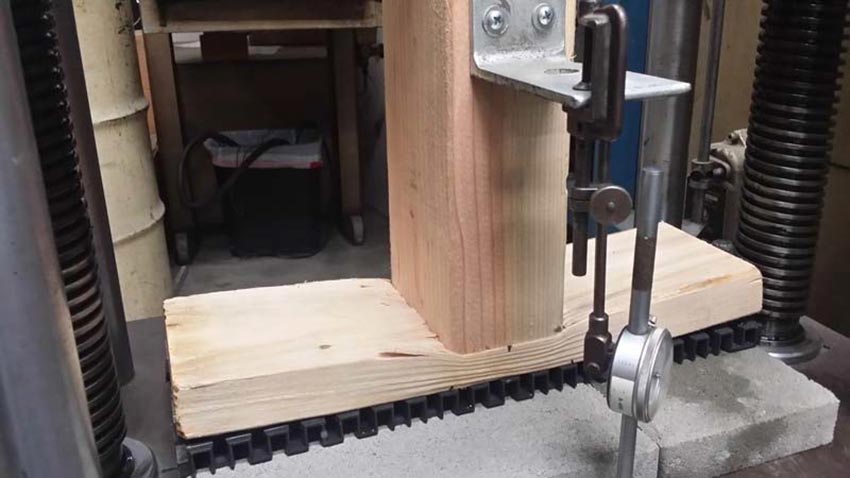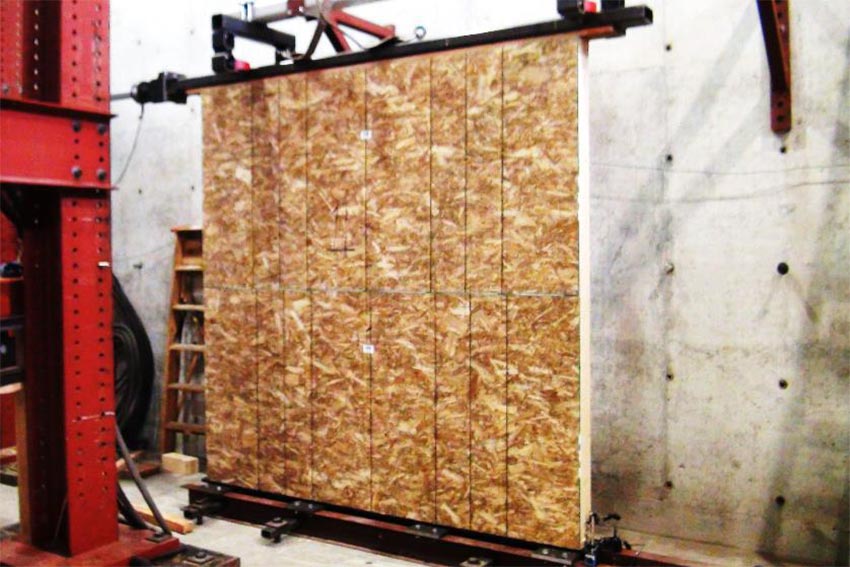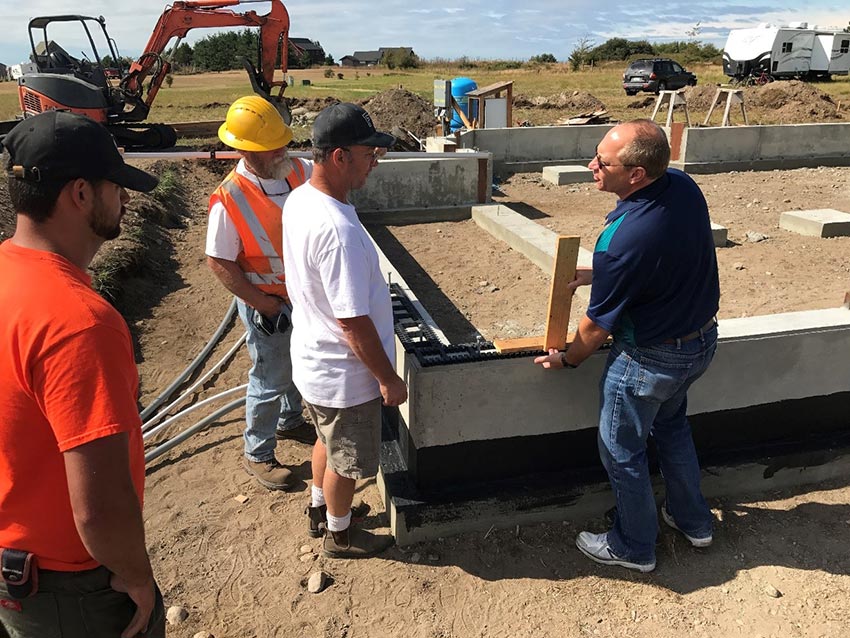The Foundation of Durability
Compressive Strength

Testing indicates the vent system is stronger than the sill plate.
These vents are made of a composite material that may consist of calcium carbonate, and recycled plastics. The leading brand has an ultimate compressive strength of more than 56,000 pounds per lineal foot of vent. And when ICC-ES standards are applied, the vents can safely support 7,140 pounds per lineal foot. Wherever a wooden sill plate is trusted to hold the weight of the structure, the vent system can do the same. The wooden sill plate will be the controlling factor.
Testing
This brand has been evaluated as of May 2019 with an ICC-ES report. In addition, these systems have more than a 45-year track record of successful use in Japan. The perimeter vent system is the most common way crawl spaces and foundations are vented in Japan.
Sustainability
Because the vent is installed between the concrete foundation and the wooden sill plate, and thus the sill plate is not in direct contact with the concrete, IBC and IRC codes do not require treated lumber. With all treated sill plates eliminated from the specs, the opportunity arises for more build green points for the project.
Sizes
Perimeter vent systems generally comes in 6 inches wide for 2 x 6 and 2 x 8 framing. The covering (flashing) generally comes in 13⁄4-inch (45-millimeter) depth (protrusions) from the wall and may be is available in white and black. The covering may be available in a paintable galvanized steel.
Performance During Earthquake Testing

Testing indicates the wall is as strong with the perimeter vent system as without.
As mentioned earlier, this perimeter venting system was invented in Japan, where they used the same type of vents installed in the concrete as is used in the United States because the weak point in the foundation is where the concrete vent box is located during an earthquake. This is why the perimeter vent system sits on top of the foundation wall and is not set into the concrete to keep the strength of the concrete foundation wall.
In addition, the venting system on top of the foundation wall does not weaken the lateral resistance of the light-frame shear wall system. Shear wall tests indicate that the wall is just as strong with perimeter vents as it is without the vent.
According to test results from the renowned University of British Columbia Timber Engineering & Applied Mechanics Lab: “The walls with (a continuous perimeter venting system) had similar load-bearing capacity compared to the walls without (the perimeter venting system). On average, the difference between the two groups was 2 percent in peak load and 4 percent in deformation capacity. There was no significance in the vertical movement of the wall.”
New vs. Retrofitted Homes
This type of vent is for new construction or new additions only. It must be installed under the sill plate so it cannot be retrofit into an existing house.
Other Applications
In addition to crawl spaces, continuous perimeter vents can be used on the inside of the garage to provide airflow. For attached garages, non-vented pieces are installed to prevent air flowing from the garage into the crawl space. It is added here or in other locations on the foundation wall to keep the sill plate and stud height the same all around the foundation. It can also be used to separate the sill plate from the concrete to eliminate the treated sill plate and use just a standard sill plate.
Installation of Continuous Perimeter Foundation Vent System

Installation happens in two phases. The framers install the vent, and the siders install the flashing/cover.
Installation of the vent system will vary from the conventional building process, and there may be a learning curve in terms of phasing rather than the technical aspect of the installation itself. There are two parts to the system, and they are installed during two different phases of construction. The framers install the perimeter vent, which generally comes in 3-foot sections, before they install the sill plate. A few weeks later, when the siders are ready to install the exterior siding, the second part of the system is installed, the vent covering/flashing, which generally comes in 10-foot sections.
For the builder, one of the biggest benefits is that the complete perimeter of the crawl space is being vented instead of just the corners and every 8 to 10 feet of the foundation walls. This provides maximum cross ventilation and leads to better moisture management in the crawl space, thus prolonging the life of the wood under the house.
For the engineer, the perimeter vent system eliminates the need to calculate the loss of strength in the foundation due to the vent box holes in the structural concrete or rim joist.
For the architect, the biggest benefit is the overall finished clean look of the exterior of the house with no visible vent boxes. The homeowner gains confidence that his or her crawl space will be properly vented to prevent damage to the home and occupants.









